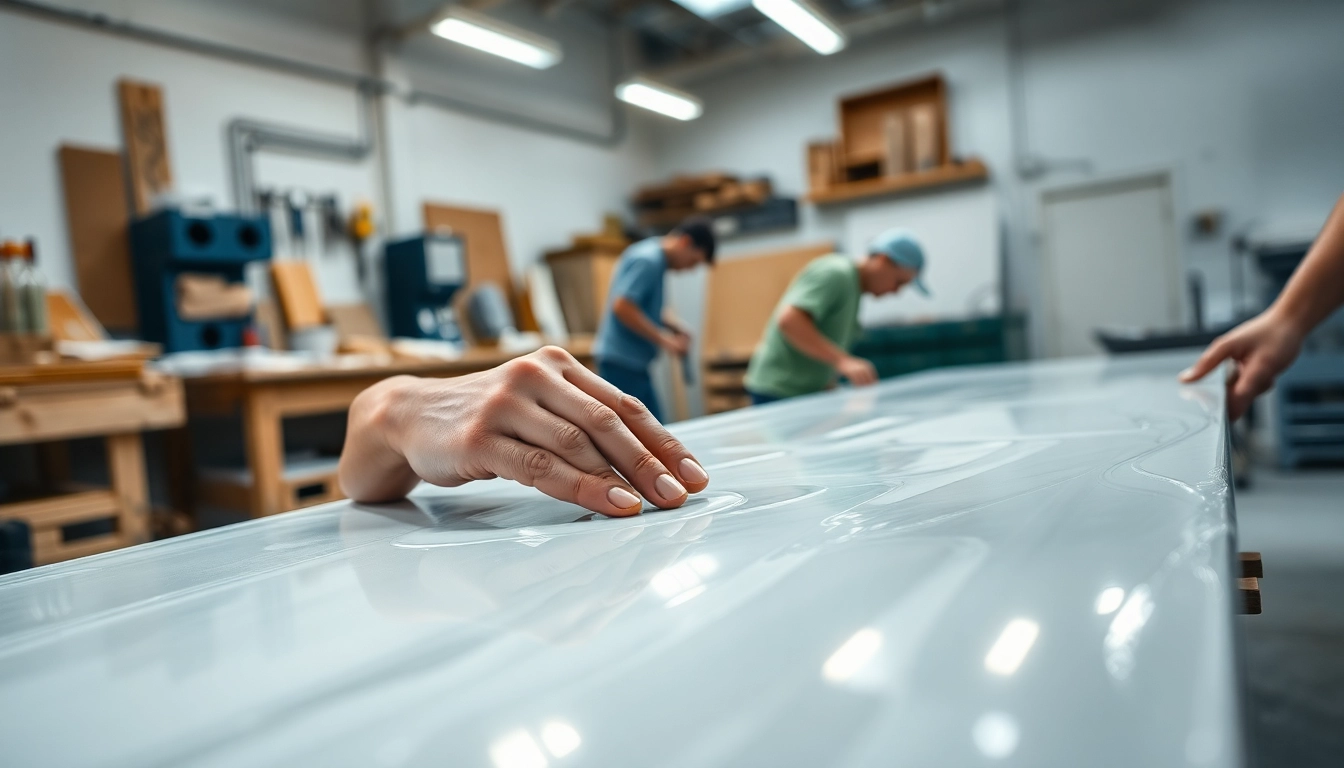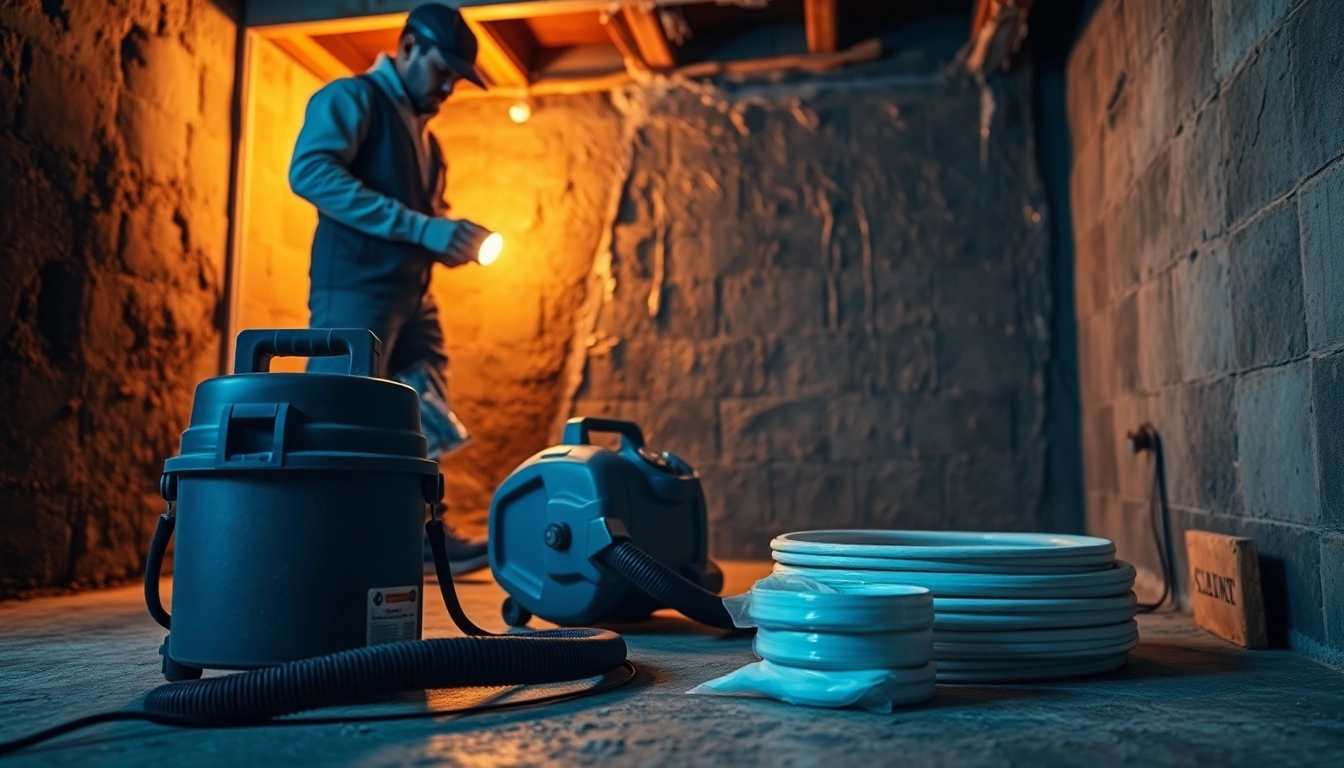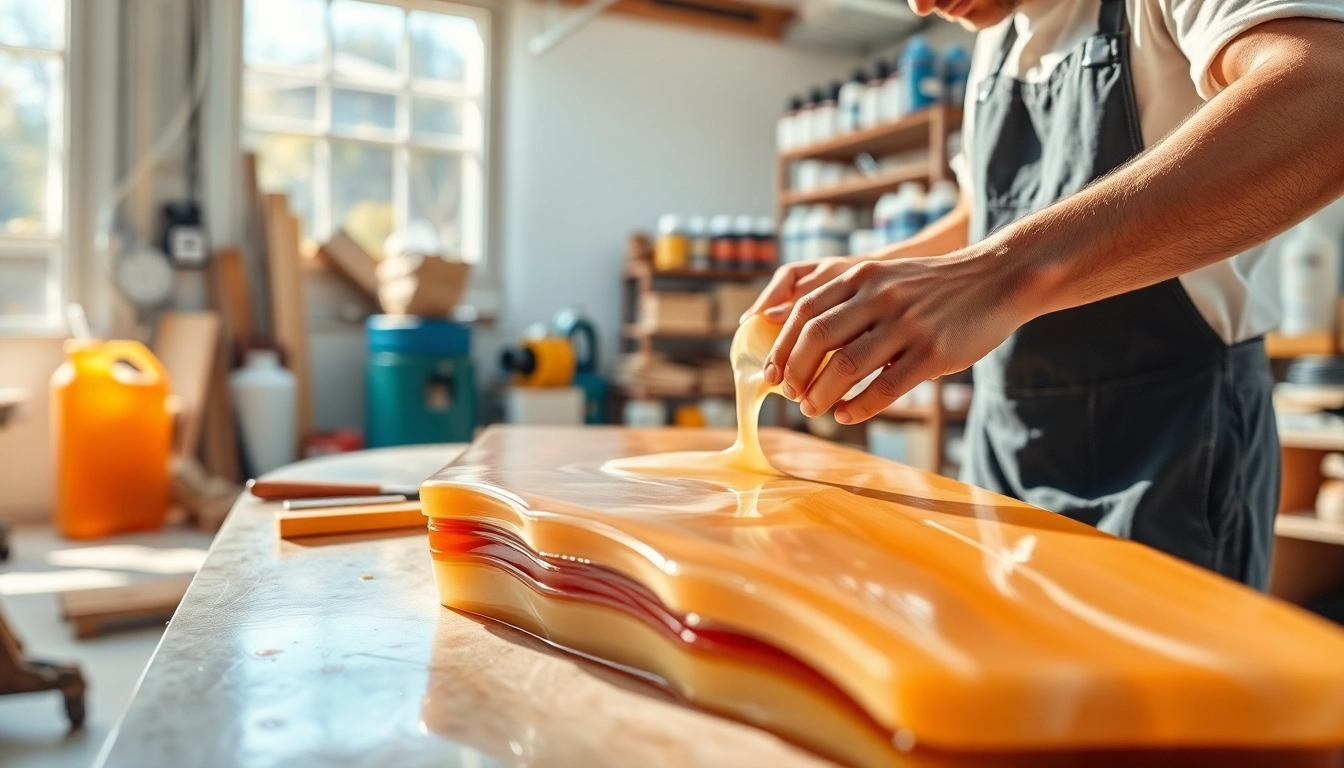
Understanding Laminating Resin: Definition and Types
What is Laminating Resin?
Laminating resin is a specific type of synthetic resin that is used mainly in composite materials. With its excellent adhesive properties, laminating resin facilitates the bonding of different materials, commonly fiberglass or other reinforcement materials, into durable and robust structures. The unique properties of laminating resin make it ideal for various applications, ranging from marine and automotive manufacturing to DIY home projects. It can create lightweight yet strong laminates when applied appropriately, allowing Enhanced durability and insulation.
At its core, laminating resin works by hardening or curing when mixed with a hardener or catalyst, creating a solid and stable structure that is resistant to various environmental factors such as UV radiation, moisture, and temperature variations. The effectiveness of laminating resin is typically dependent on its formulation, with variations including both polyester and epoxy types that cater to specific needs and applications. It is essential for users to understand the characteristics of the different types of laminating resin to make informed choices tailored to their specific projects. If you’re interested in exploring the options available for laminating resin, you can find more information here.
Types of Laminating Resin: Polyester vs. Epoxy
Understanding the different varieties of laminating resin is crucial in selecting the right type for your application. The two most common forms are polyester laminating resin and epoxy laminating resin, each with distinct characteristics, benefits, and ideal use cases.
Polyester Laminating Resin
Polyester laminating resin is widely recognized for its cost-effectiveness and ease of use. It cures quickly, typically at room temperature, resulting in a harder yet less flexible bond. Its primary advantage lies in its ability to adhere well in marine applications, making it popular among boat builders and DIY enthusiasts for crafting durable hulls and other components. However, polyester resin is sensitive to moisture and UV exposure, which may result in a breakdown over time unless proper protective measures are applied.
Epoxy Laminating Resin
In contrast, epoxy laminating resin offers superior strength and adhesion properties, making it ideal for more demanding applications. It is highly versatile and can be used on a variety of materials, including wood, fiberglass, and even metals. Epoxy laminating resin tends to be more resistant to chemical exposure and environmental degradation compared to its polyester counterpart. As such, it is commonly employed in high-performance environments, such as aerospace and automotive sectors. Additionally, epoxy formulations can be modified to improve flexibility, viscosity, and curing time, allowing users a higher degree of customization based on their requirements.
Choosing the Right Laminating Resin for Your Projects
Selecting the appropriate laminating resin hinges on several factors, including project requirements, environmental conditions, and material compatibility. When embarking on a new project, consider the following aspects:
- Application Environment: Assess where your project will be used. For example, marine applications require a resin that can withstand humidity and saltwater exposure.
- Material Compatibility: Different resins adhere better to certain materials. Ensure the resin you choose works well with both the reinforcing material and the substrate.
- Strength Requirements: Determine the level of strength and flexibility needed for the completed structure and choose a resin that meets those specifications.
- Curing Time: Depending on your project timeline, you may require a resin that cures quickly or one that allows for longer work periods.
By evaluating these factors, users can make more informed choices, ensuring they achieve optimal results in their projects.
Key Applications of Laminating Resin
Laminating Resin in Marine Applications
One of the most prominent applications for laminating resin is in the marine industry. Boat builders favor laminating resin for both hull construction and repairs due to its superior adhesion and water resistance. The use of laminating resin allows for the creation of robust, lightweight structures that can endure the rigors of an aquatic environment. When used with fiberglass cloth, laminating resin forms a solid shell that is both strong and lightweight, critical for maintaining buoyancy and performance on the water.
Using Laminating Resin for Automotive Projects
The automotive sector also benefits from laminating resin in various applications, including bodywork, repair, and assembly of complex components. It allows for the creation of lightweight, fuel-efficient vehicles that do not compromise on strength or safety. By integrating laminating resin into composite materials, manufacturers can achieve enhanced performance metrics such as improved structural integrity and resistance to impact forces, which are vital for both aesthetic and safety concerns.
DIY Lamination Projects with Laminating Resin
For DIY enthusiasts, laminating resin presents numerous opportunities for creative projects. From crafting custom furniture to producing artistic sculptures, the versatility of laminating resin lends itself to a wide array of applications. Utilizing laminating resin allows hobbyists to create personalized items that are both visually appealing and highly durable. Additionally, the ease of use associated with certain types of laminating resin makes it an accessible choice for beginners exploring the world of composite materials.
Best Practices for Working with Laminating Resin
Surface Preparation for Optimal Adhesion
Proper surface preparation is crucial for achieving optimal adhesion when working with laminating resin. Ensure that surfaces are clean, dry, and free from contaminants such as dust, grease, or moisture. For best results, consider using a mild detergent and water solution followed by a thorough rinse and drying process. If necessary, roughen the surface with sandpaper to enhance mechanical interlocking, which promotes better adhesion and more durable bonds.
Mixing and Applying Laminating Resin Effectively
Once the surface is prepared, the next step is to mix the laminating resin properly. Follow the manufacturer’s instructions closely to ensure accurate ratios of resin to hardener. Inadequate mixing can lead to curing issues and compromised strength. Once mixed, apply the resin within the specified working time, using a brush, roller, or spray system based on your application needs. Techniques such as layering and wet-laying fiberglass cloth into the resin can enhance structural strength and maintain a smooth finish.
Common Mistakes to Avoid When Using Laminating Resin
To maximize the effectiveness of laminating resin, avoid common pitfalls that can compromise the quality of your project:
- Poor Mixing: Inaccurate ratios or insufficient mixing can lead to weak points in the laminate.
- Neglecting Safety Precautions: Always use appropriate PPE such as gloves, goggles, and masks when working with chemical resins to protect against fumes and skin contact.
- Rushing the Process: Allow resin to cure fully as per the specifications before sanding, painting, or applying additional layers to prevent trapping air or moisture.
Safety and Environmental Considerations
Health Risks Associated with Laminating Resin
Working with laminating resin can pose certain health risks, primarily due to volatile organic compounds (VOCs) emitted during the mixing and curing processes. Prolonged exposure can lead to respiratory issues, skin irritation, and other health concerns. Therefore, it is imperative to work in a well-ventilated space, using respirators and appropriate safety gear to mitigate risks.
Safe Handling and Storage Practices
In addition to ensuring personal safety, it is essential to handle and store laminating resin properly to prevent accidents or degradation. Keep resin in tightly sealed containers away from direct sunlight, humidity, and extreme temperatures. Follow specific storage guidelines provided by manufacturers, ensuring compatibility with any hardeners or additives. Dispose of used materials according to local regulations to minimize environmental impact.
Eco-Friendly Alternatives to Traditional Laminating Resin
As environmental concerns grow, alternatives to traditional laminating resin are becoming more accessible. Bio-based and eco-friendly resins are being developed to provide similar performance while reducing the carbon footprint associated with production and disposal. Researching sustainable options can lead to more environmentally responsible choices without sacrificing performance in applications ranging from boat building to automotive manufacturing.
Evaluating Performance and Results of Laminating Resin
Assessing the Durability of Laminating Resin Applications
To ensure that your laminating resin application will perform reliably over time, it’s critical to assess its durability. This may involve testing for resistance to environmental conditions, impact, and fatigue, as well as assessing chemical resistance based on the project’s end use. Regular inspections and maintenance can also help identify potential issues before they develop into significant failures.
Testing and Quality Control for Laminating Resin Projects
Implementing rigorous testing and quality control procedures during production and application can help maintain high-performance standards. Conduct mechanical tests to evaluate shear, tensile, and flexural properties of the laminated products. Testing methodologies should align with industry standards to ensure reliability and compatibility for specific applications.
Case Studies: Successful Projects Using Laminating Resin
Documenting successful projects utilizing laminating resin can provide valuable insights into the benefits and applications of this versatile material. From the construction of lightweight yet sturdy vessels to innovative repair work on existing structures, case studies can illustrate effective techniques and highlight the advantages offered by various formulations of laminating resin. Sharing such information within communities can inspire others to look for innovative applications that leverage the strengths of laminating resin, fostering an engaged and knowledgeable practitioner community.







